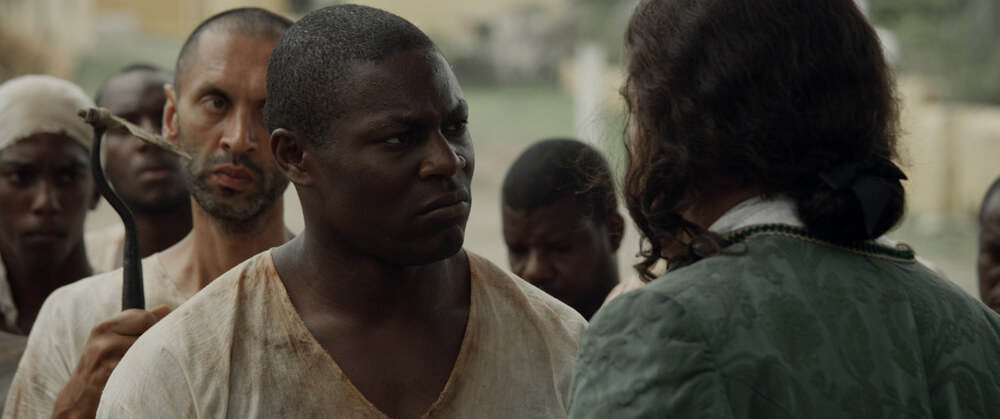Explore the very best movies from Central America and the Caribbean, based on a selection of over 9,100 films.
Join us in shifting the world’s focus on American cinema back to the many other equally rich, yet underappreciated film industries around the world. In this article series, we highlight several hidden gems produced within a certain geographical region, one film per country, from the riches of Europe to the remote island nations of Polynesia.
As a bonus, we will make a donation to the welfare of wild cats, and the preservation of their habitats, for every film purchased through this site.
Table of Contents
Pick a Country
Cuba • El Salvador • Jamaica • Netherlands Antilles • Nicaragua • Puerto Rico
The History of Central American Cinema
Throughout most of the 20th century, Central America and the Caribbean region have been plagued by political unrest. Since it was hard to find the funds for producing fiction films, many local industries chose to focus on the creation of documentaries. One of the leaders in the field of documentary filmmaking was the Cuban film industry. Cuban film influenced similar trends in Puerto Rico and Nicaragua, and as a whole, the countries of Central America and the Caribbean became famous for their documentary output.
To produce fiction films, co-productions with Mexico and Argentina were initiated, as well as collaborations with the region’s former colonial powers. In spite of this new development, local film industries remained in a state of arrested development until after local dictatorships were ended, and political barriers were lifted.

Jamaica and the island nation of the Netherlands Antilles were an exception to the rule, as they migrated from their colonial status to becoming independent nations with relative ease. Following the passing of the Jamaica Independence Act in 1962, the island made a name for itself with the development of its reggae music culture.
Once democracy began to take hold in Central America and the Caribbean, local film industries slowly began to expand. Tackling social and political issues in their home countries, filmmakers managed to create a host of intense, personal dramas, and short films.
The Best Films from Central America
Travel the gateway between North America and South America, by exploring the cinema of Central America: witness the dawn of the film industry in El Salvador, and learn more about the social struggles of the people of Nicaragua.
El Salvador: Cinema Libertad
Director: Arturo Menendez, 2010.

Over the course of the 20th century, the Central American nation of El Salvador was plagued by political unrest and war. From the guerrilla revolt of indigenous farmers in the 1930s to the 1979 coup d’état to the Salvadoran Civil War which ravaged the country between 1979 to 1992, establishing a local film industry was the least of El Salvador’s worries.
Most films about El Salvador are produced by the United States. Set during the Salvadoran Civil War, the most famous production that focused on El Salvador was Oliver Stone’s Salvador (1986). The film features James Woods as an American journalist covering the war in El Salvador. Salvador showcases a clear bias in favor of the left-wing revolutionaries, rather than the US-supported military operating in the Central American nation. The film was a critical success and received several Academy Award nominations.
Another U.S. film covering the war was John Duigan’s Romero (1989), which centered on Óscar Romero, an Archbishop who risked his life standing up against the tyrannical right-wing parties ruling El Salvador. Romero was assassinated while delivering a sermon in 1980. During his funeral, between 30 and 50 people were killed in the chaos that ensued after smoke bombs exploded in the streets, and rifles were fired from the surrounding buildings.
Since the end of the Salvadoran Civil War in 1992, El Salvador’s economy has been reformed and social conditions have gradually improved. For the first time in years, a niche for entertainment started to form: the release of Luis Mandoki’s locally produced film Innocent Voices (2004) was met with critical acclaim. Based on writer Óscar Torres’s childhood, the film shows the Salvadoran Civil War through the eyes of a young boy.
Though the cinematic output of El Salvador remained small, several talented directors emerged from the ashes of war. One of them was Arturo Menendez, who created a series of short films starting with his debut film Wake Up (2000). Menendez’s attracted international attention with his inspirational short film Cinema Libertad (2010), which served as an ode to cinema, while reflecting on El Salvador’s ongoing social struggles.
Nacho, a boy living in an abandoned cinema, meets a girl named Ela with whom he brings back life to the abandoned movie theater and its inhabitants.
Watch Cinema Libertad on Vimeo.
Nicaragua: Alsino and the Condor
Director: Miguel Littin, 1982.

Film was introduced into Nicaragua in the late 1890s. Not much is known about possible efforts in starting local production, but it is said that several documentary-style shorts were made by foreign visitors. Though in the 1920s local documentary film production started, these films have not survived. Like in Mexico, most early Nicaraguan films were either damaged or lost. After budget constraints halted the production of the first Nicaraguan fiction film, it took several decades before a successful attempt was achieved: Benjamin Zapata’s El Nandaimeño (1960).
Up until the 1980s, Nicaraguan cinema mostly consisted of documentaries and political films. The films were influenced by Cuban documentary cinema. In 1982 Chilean director Miguel Littín shot what is known as the most influential Nicaraguan film, Alsino and the Condor (original title: Alsino y el condor, 1982). The film focused on socio-political issues, commenting on U.S. interventionism and Nicaragua’s quest for freedom. Co-productions with Chile, Mexico, and Spain soon became commonplace. One of these international productions was Littín’s Sandino (1991), a film on the U.S. occupation of Nicaragua in 1927. Other films co-produced with foreign nations were The President (1983), made together with Cuba, and Walker (1987), made by the United States and Mexico.
After 1984, the Nicaraguan Film Institute, which had funded many of the country’s productions during the early 1980s, could no longer continue to finance the industry as the Contra War took priority. During this period, the revolutionary war film Carla’s Song (1996) attracted attention. The film focused on a Nicaraguan exile and was produced and funded through foreign nations.
Nowadays, Nicaraguan cinema focuses on experimental shorts similar to El Salvador, an example of which is the short film Ruteados (2013). Additionally, several amateur productions saw the light of day over the course of the last two decades. These films, like Florence Jaugey’s female boxing drama La Yuma (2008), are often still co-produced with Spain, Mexico, and other foreign nations. The film has a tendency to focus on the everyday reality of Nicaraguan life.
Living with his grandmother in a remote area of Nicaragua, the young Alsino becomes engulfed in the war between rebels and government troops.
Find Alsino and the Condor on Amazon.com.
The Best Films from the Caribbean
Go island hopping in the tropical Caribbean, where we visit the colorful street of Cuba, blaze to the reggae music of Jamaica, hit the beaches of Puerto Rico, and explore the culture and traditions of the Netherlands Antilles.
Cuba: Strawberry and Chocolate
Director: Tomás Gutiérrez Alea & Juan Carlos Tabío, 1993.

Like in its surrounding countries, the cinematographe arrived in the late 19th century. After visiting Mexico, Gabriel Veyre brought the device to Havana in 1897 to show four short films. Veyre would go on to shoot the first film on the island; a short documentary on the island’s firemen. Though in the next few decades mostly documentary films were created, a few short fiction films were produced that imitated American slapstick films and French comedies. In 1937, the first Cuban feature-length fiction film was produced.
Production of feature film continued up to the Cuban Revolution of 1959, after which the Instituto Cubano del Arte y la Industria Cinematográficos (ICAIC) was founded: a governmental institution to develop national cinema. Many of the films produced under the ICAIC were focused on anti-imperialism and the glory of the revolution, such as the contemporary drama Memories of Underdevelopment (1968) and the historical drama Lucía (1969).
In parallel with the local film industries, Cuban directors living in exile told their stories through films such as The Worms (1978). Similar local and foreign productions focused on the coming and going of Cubans in exile. Examples include the comedy Amigos (1985), which tells the story of Cuban exiles living in Miami, or Parting of the Ways (1985) and Honey for Oshún (2001), which focused on the troubled return of exiles returning to Cuba.
Throughout its history, Cuban cinema remained famous for its documentary output. Still, the country frequently produced new fiction films. Due to their strong focus on an array of social and political issues, this led to a few controversies. Alfredo Guevara was ousted from his position as head of the ICAIC due to his handling of the Cuban novel-adaption Cecilia (1982), and his successor Julio García Espinosa was retired after his film Alice in Wondertown (1991) was too critical of the bureaucracy of the government. Guevara returned to fight back governmental influence, and a few years later the controversial Strawberry and Chocolate (original title: Fresa y Chocolate, 1993) came out; the first Cuban film to be nominated for an Academy Award.
Strawberry and Chocolate was one of many Cuban co-productions with Spain and Mexico. From the 1960s onwards, international co-productions helped Cuba in the funding of its cinematic output. Co-producing films with Spain did however come with some requirements: Spain would demand a certain number of cast and crew members to be Spanish in order for them to co-finance a production. Cuba itself in turn helped other Latin American nations to produce films through technical support, as was the case with our earlier recommendation, Alsino and the Condor.
Strawberry and Chocolate tells the story of two men who are each other’s opposites in every way: when a skeptical homosexual man initiates a friendship with a prejudiced communist, both their views are challenged.
Find Strawberry and Chocolate on Amazon.com.
Jamaica: Rockers
Director: Ted Bafaloukos, 1978.

After several decades of arrested development in the local film industry, the Jamaican government passed The Motion Picture (Encouragement) Act in 1948. Still, finance remained one of the largest growth barriers in the Jamaican film industry. In order to market the island as a top-ranking filming location and negotiate deals with foreign film companies, the Jamaican Film Commission followed in 1984.
Jamaica cinema’s first and most internationally recognized success was Perry Henzell’s The Harder They Come (1972). The film focused strongly on Jamaica’s vibrant culture of Reggae music. Reggae found its origin on the island, stemming from early Ska and Rocksteady music. The genre was heavily popularized by Bob Marley and the Wailers and other Jamaican musicians, and The Harder They Come led to a new wave of popularity within the genre.
In The Harder They Come, Jimmy Cliff plays Ivan, a poor and unemployed Jamaican who dreams of becoming a successful Reggae singer. Ivan soon learns the world he hopes to enter is filled with corrupt record producers and drug dealers. By coupling a strong underlying social theme with an exercise in rhythm, the film managed to bring Reggae culture to the world.
The success of The Harder They Come led to the production of several other successful local films, among which the comedy-drama Smile Orange (1976) the drama Countryman (1982), in which a young American is framed for drug-pushing by Jamaican politicians. Ted Bafaloukos’ Rockers (1978) closely followed the style of The Harder They Come in creating a musical comedy-drama marinated in Reggae culture. Like The Harder They Come, the film had a small budget, but managed to capture reggae culture at its peak. Today, Jamaica’s reggae culture is still celebrated through the Reggae Film Festival, which was started in 2008 in Emancipation Park.
Jamaican Horsemouth buys a motorcycle to make some extra money by selling and distributing records across the island, but when his bike gets stolen, things take a turn for the worse.
Find Rockers on Amazon.com.
Puerto Rico: Lovesickness
Director: Carlitos Ruiz Ruiz & Mariem Pérez Riera, 2007.

The history of cinema in Puerto Rico begins with the United States’ invasion of the island in 1898. Cinema had been around in the United States for several years, and American soldiers brought cameras to record their experiences on the island. Like in Puerto Rico’s surrounding countries, cinema remained focused on the production of documentaries for quite some time. Photographer Rafael Colorado D’Assoy’s A Drama of Puerto Rico (1912) was the first fiction film to come out. Over the course of the decade, several film production companies were founded, leading to a growth in cinematic output.
A highlight within the Puerto Rican film industry was American director Jack Delan’s Los Peloteros (1953), which was based on a true story. In the film, an impoverished children’s baseball team tries to find the money to purchase baseball uniforms in order to join the little league. Other local successes during the 1950s were musicals, such as Maruja (1959).
Backed by the booming Mexican film industry, the 1950s and 1960s were a period of prosperity in the Puerto Rican film industry. In addition to Mexican films, the island hosted a large number of United States productions, such as Bob Hope’s The Private Navy of Sgt. O’Farrell (1968).
For a while, international co-productions brought money into the local film industry. While the United States continued to film many productions on the island, the 1970s did see a decline in local productions. One director who managed to stand out was Jacobo Morales, who’s multi-narrative drama …And God Created Them (1979) and the romantic drama What Happened to Santiago (1989) managed to receive critical acclaim.
From Woody Allen’s Bananas (1971) and Steven Spielberg’s Amistad (1997) to Steven Soderbergh’s Che (2008), Puerto Rico remained host to a series of high-profile American films. The continued presence of cinema on the island eventually led to a new filmmaking boom in the 2000s. Most of these local productions are seen as art-house films, as they continuously have to compete with Hollywood films in local cinemas. An exception to the rule was Carlitos Ruiz Ruiz and Mariem Pérez Riera’s three-part romantic comedy-drama Lovesickness (original title: Maldeamores, 2007), which became a big box office success.
Maldeamores takes a look at the ironies of love through three stories involving a middle-class family, a hostage situation, and an elderly couple.
Find Lovesickness on Amazon.com.
Netherlands Antilles: Tula: The Revolt
Director: Jeroen Leinders, 2013.

As a successor to the Dutch colony of Curaçao and Dependencies, the Netherlands Antilles came into being in 1954. The Netherlands Antilles consisted of six islands and was a constituent country of the Kingdom of the Netherlands until it was dissolved in 2010. The Antilles have their own distinct culture, as is evident in their cinematic output. Though only a handful of films were produced within the island nation, those films did thrive to showcase local culture. Most of them were co-produced with the Netherlands, either through technical direction or through funding.
A notable example of Antillean cinema is Sander Burger’s The Panman: Rhythm of the Palms (2008), a co-production between the Netherlands and the island of Sint Maarten. The film tells the story of the rise and fall of the steel drum pan player Harry Daniel, a local icon of the Dutch Caribbean. The film shows the importance of the islands’ pan drum culture, and how local traditions lie under threat of foreign influences.
Hopping over to the island of Curaçao, Jeroen Leinders’ Tula: The Revolt (2013) travels back in time to tell the story of one of the island’s most famous historical figures, Tula. Tula was one of the many African men enslaved on Curaçao in the late 18th century. In 1795, Tula became the leader of the island’s largest slave revolt. Tula, portrayed in the film by British actor Obi Abili, fought for human rights and independence long before slavery was eventually abolished in the Antilles in 1863.
Out of the six islands within the Netherlands Antilles, Curaçao is the largest. As there are more resources available to produce films on the island, the Curaçao film industry is by far the most prolific. Bridging the dissolvent the Netherlands Antilles, a recent film in the Papiamento language from Curaçao is Buladó (2020). Set in Band’abou, in the island’s countryside, the film centers on two men, each following their own believes: while rational police officer Ouira prefers to keep a clear mind, Weljo values the exploration of the spiritual believes of the people of Curaçao.
In 1795, a slave named Tula working on the island of Curaçao in the Dutch East Indies, stands up against his oppressors and leads a revolt to give his people back their freedom.
Find Tula: The Revolt on Amazon.com.
Looking for something else? Check out our recommendation for the best films from Europe, films from Eastern Europe, films from Africa, films from South Asia, films from West and Central Asia, films from East and Southeast Asia, films from Oceania and the Pacific, films from North America and films from South America.
More articles on Movies
- World Cinema: One Film Per Country
- Cinema of South America
- Cinema of Central America and the Caribbean
- Cinema of North America
- Cinema of Oceania and the Pacific
- Cinema of East and Southeast Asia

Content creator Pim Razenberg is an experienced traveler who’s been roaming the planet for many years. After a stint in the Dutch film industry, he lived and worked in Romania, the United Kingdom, and Thailand. Pim is currently working in the Netherlands, bringing creative new projects to fruition and writing a novel detailing his journeys across the world.







